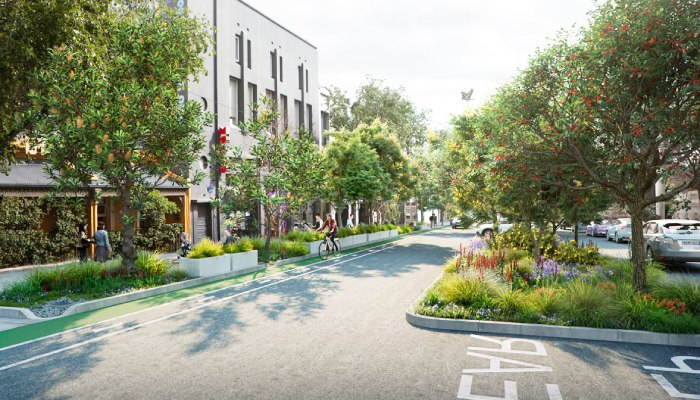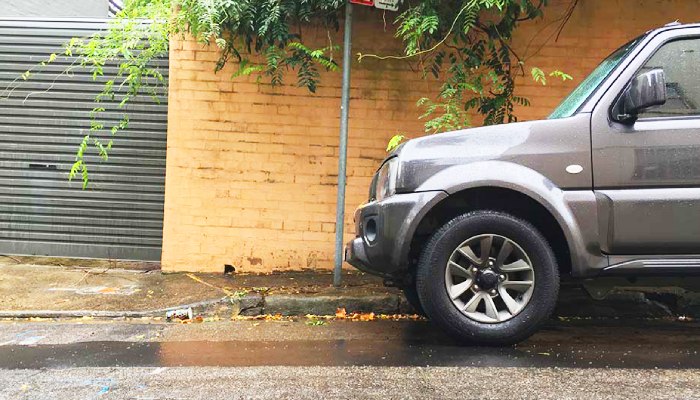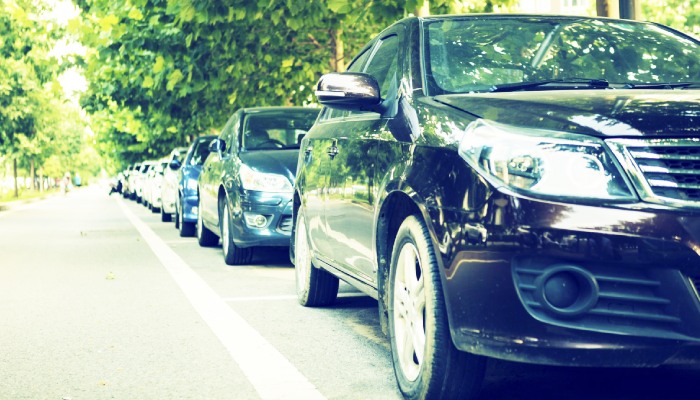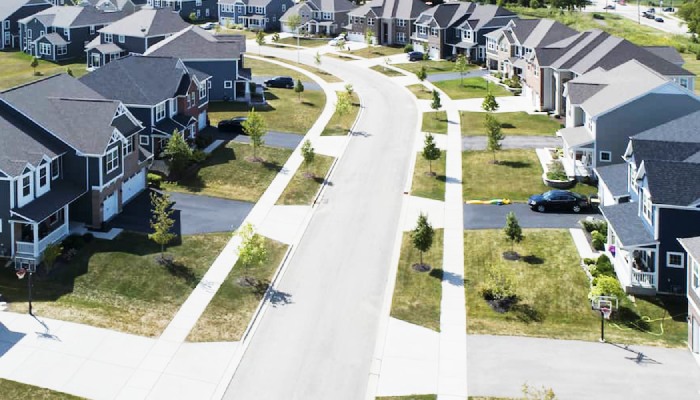
Tips for Respectful and Safe Parking in Tight Urban Spaces
Parking in tight urban spaces can be a challenging task, especially when navigating crowded streets and limited parking options. Whether you’re a seasoned driver or a newcomer to city driving, it’s crucial to approach parking with care and consideration for others. Understanding the rules and best practices not only helps you avoid fines but also ensures a respectful and safe environment for everyone. One of the most common concerns in urban areas is determining how close you can park to a driveway, a detail that can easily be overlooked but has significant consequences. This article offers practical tips to help you park safely and courteously in tight urban spaces, ensuring that you’re following local regulations while being mindful of your surroundings.
Understanding Local Parking Regulations
Parking regulations in urban areas are often strict and can vary significantly from one city to another. Knowing and adhering to these rules is essential for avoiding fines, having your car towed, and ensuring that you don’t inadvertently cause disruptions. For example, understanding how close you can park to a driveway is a key consideration in many cities, as blocking or parking too close to a driveway can obstruct access, prevent car doors from opening fully, and lead to penalties.
In addition to driveway regulations, many urban areas have specific parking rules regarding parking near intersections, fire hydrants, and pedestrian crossings. These regulations are designed to maintain traffic flow and ensure the safety of both drivers and pedestrians. Before parking in any urban area, it’s wise to familiarize yourself with the local parking laws, which can often be found on municipal websites or through local transport authorities. By understanding and respecting these regulations, you contribute to a smoother, safer, and more considerate driving environment.

The Importance of Spatial Awareness
In tight urban spaces, spatial awareness is crucial for safe and effective parking. The ability to accurately judge the available space around car park your vehicle not only helps you avoid damaging your car but also ensures that you don’t inadvertently cause inconvenience to other drivers or pedestrians.
When parking in a confined area, take the time to assess the space before you begin maneuvering. For parallel parking, start by ensuring there’s enough room for your vehicle between the other cars both in front of and behind the spot you’re aiming for. A good rule of thumb is to look for a space that’s at least 1.5 times the length of your car. Approach the space slowly, using your mirrors and, if necessary, parking sensors or cameras to guide you. It’s better to take your time and make multiple adjustments than to rush and risk a misjudgment.
In addition to considering the vehicles around you, be mindful of the space you’re leaving on either side of your own parked car. Ensure there’s enough room for others to open their doors without difficulty and for pedestrians to pass by safely. In areas with heavy foot traffic, this consideration is especially important to prevent accidents and maintain a respectful environment.
Developing strong spatial awareness not only makes parking in tight urban spaces easier but also helps you become a more confident and courteous driver.
Respecting Driveways and Access Points
One of the most critical aspects of parking in urban areas is ensuring that you do not block driveways or other access points. These spaces are essential for allowing residents, businesses, and emergency services to enter and exit properties freely. Blocking a driveway, even partially, can cause significant inconvenience and potentially lead to fines or towing.
When parking near a driveway, always leave enough space to ensure that vehicles can enter and exit without difficulty. A good practice is to check for any markings or signs indicating the area that should be kept clear. In some locations, there may be no parking signs or specific regulations dictating how close you can park to a driveway, so it’s essential to be aware of these rules to avoid penalties.
Beyond driveways, be mindful of other access points, such as entrances to garages, loading zones car parks, and emergency vehicle access routes. These areas are often marked, but even if they aren’t, it’s a matter of common courtesy to avoid obstructing them. Remember, your convenience should never come at the expense of others’ access and safety.
By using street parking and respecting driveways and access points, you contribute to a smoother flow of traffic and a more harmonious urban environment. This small effort goes a long way in maintaining good relations with your neighbors and ensuring that everyone can move freely and safely through the city.

The Role of Clear Communication
Effective communication is a vital component of respectful and safe parking in urban environments. In busy cities, where parking spaces are often limited, clear communication with other drivers can prevent misunderstandings and ensure a smoother parking process for everyone involved.
When preparing to park, always use your turn signals to indicate your intentions well in advance. This simple act lets other drivers know that you are planning to park, giving them time to adjust their speed or position accordingly. If you’re waiting for a parking space to become available, turn on your hazard lights to signal that you’re pausing temporarily and are not intending to move forward. This helps avoid confusion and reduces the risk of traffic congestion.
If you notice that another driver is also eyeing the same parking spot, a polite gesture, such as a wave, can clarify who will take the space and prevent potential conflicts. In situations where multiple vehicles are vying for empty parking space, patience and courtesy go a long way. Remember that a brief delay is far better than creating a stressful or unsafe situation.
In tighter spots, such as parking garages or narrow streets, effective communication becomes even more critical. Using your horn sparingly to alert others of your presence or to signal when reversing can help prevent accidents. Additionally, if you see a pedestrian or another driver who seems unsure of your intentions, a quick, friendly wave or nod can provide reassurance and clarity.
By practicing clear and courteous communication, you contribute to a safer, more efficient parking experience for everyone in car parking spaces in the urban environment. This approach not only helps you avoid potential mishaps but also fosters a more cooperative atmosphere among drivers.
Utilizing Available Parking Aids
In today’s urban environments, technology can be a valuable ally when it comes to parking in tight spaces. Modern vehicles are often equipped with various parking aids, such as sensors, cameras, and automated parking systems, which can significantly reduce the stress and difficulty of maneuvering in congested areas.
Parking sensors, typically installed in the front and rear bumpers of a vehicle, emit audible warnings when you’re getting too close to an obstacle. These sensors are particularly useful when parallel parking or navigating into a small, parking lot or space, as they help you gauge the distance between your car and nearby vehicles or objects. The increasing frequency of the warning sound as you approach an object provides a clear indication of how much room you have left, allowing you to park with greater precision.
Rearview cameras, now a standard feature in many cars, offer a real-time visual guide to what’s behind you as you reverse. These cameras are especially helpful in urban settings where pedestrians, cyclists, and other vehicles may suddenly appear in your path. The camera’s wide-angle view and often integrated guidelines can assist in aligning your car perfectly within a parking spot.
For those who find parking particularly challenging, automated parking systems can be a game-changer. These systems can detect a suitable parking space and take control of the front steering wheel to guide your vehicle into the spot. While you still manage the accelerator, brake, and gear shift, the system handles the complex steering maneuvers, making parking in tight spaces much easier.
Using these parking aids doesn’t just make parking easier; it also enhances safety by reducing the likelihood of minor accidents and ensuring that you park within the confines of the space, minimizing the risk of obstructing traffic or other vehicles. Embracing these technologies allows you to navigate even the most challenging urban parking situations with confidence and ease.

Adapting to Varied Urban Environments
Urban areas encompass a wide range of environments, each presenting unique challenges and requirements when it comes to parking. Adapting your parking approach to suit these varied settings is essential for ensuring safety, compliance with local regulations, and consideration for others. Understanding the specific characteristics of residential, commercial, and mixed-use areas can help you make informed decisions and park more effectively.
Residential Areas
Parking in residential neighborhoods often involves navigating narrow streets and limited spaces, especially in densely populated cities. These areas may have specific restrictions on street parking, such as permit-only parking or designated times when parking is allowed.
Tips for Residential Parking:
- Observe Local Signage: Always check for signs indicating parking restrictions, permit requirements, or street cleaning schedules to avoid fines and inconvenience to residents.
- Be Mindful of Driveways: Ensure you are not blocking or encroaching upon driveways and garage entrances, allowing homeowners unobstructed access to their properties.
- Respect Designated Spaces: Avoid parking in spaces reserved for specific users, such as disabled parking spots or loading zones, unless you have proper authorization.
- Consider Noise Levels: When parking late at night or early in the morning, minimize noise to respect the peace and quiet of the neighborhood.
Commercial Areas
Commercial districts are typically bustling with activity, and parking spaces can be in high demand. These areas often feature metered parking, multi-level parking garages, and strict time limits to accommodate the constant flow of visitors and customers.
Tips for Commercial Parking:
- Plan Ahead: Research available parking options before arriving, including the locations of public parking garages and the costs associated with them.
- Use Technology: Utilize parking apps to find and reserve spaces, pay for parking, and receive notifications when your time is about to expire.
- Adhere to Time Limits: Respect posted time restrictions to ensure turnover and availability for other drivers, and to avoid fines or towing.
- Prioritize Safety: Park in well-lit and busy areas, especially if you will be returning to your vehicle after dark, to enhance personal safety.
Mixed-Use and Entertainment Districts
Areas that combine residential, commercial, and entertainment venues can present complex parking scenarios, with fluctuating demand free parking throughout the day and night. Events, festivals, and peak business hours can further complicate parking availability.
Tips for Mixed-Use Parking:
- Be Flexible: Be prepared to walk a short distance if immediate parking is unavailable, and consider alternative transportation options during peak times.
- Follow Event Guidelines: During special events, adhere to temporary parking regulations and utilize designated event parking areas when available.
- Share Spaces Considerately: In shared parking lots or structures, park within designated lines and avoid occupying more space than necessary to maximize availability for others.
- Respect Residential Zones: Be cautious not to overflow into residential parking areas when visiting commercial or entertainment venues, respecting the residents’ need for accessible parking.
Adapting to International Settings
If you are driving in urban areas distracted driving abroad, additional considerations come into play due to different driving customs, signage, and regulations.
Tips for International Urban Parking:
- Research Local Laws: Familiarize yourself with the country’s parking regulations, common signage, and enforcement practices before driving.
- Understand Cultural Norms: Recognize and respect local customs related to parking etiquette and practices, which may differ significantly from those at home.
- Use Local Resources: Consult local tourism offices, apps, or guides for advice on safe and legal parking options in unfamiliar cities.
- Prepare for Language Barriers: Learn key parking-related terms in the local language to help interpret signs and communicate effectively if needed.
Conclusion
Effectively adapting your parking strategies to suit various urban environments demonstrates respect for local communities and contributes to a safer and more organized city experience. By being aware of the specific challenges and requirements of different settings, you can make informed decisions that enhance convenience for yourself and others. Whether navigating residential streets, bustling commercial districts, or unfamiliar international cities, a thoughtful and flexible approach to parking is essential for responsible urban driving.
This article is of a general nature and is intended for information only. It should not be relied upon as legal advice. If you require further information, advice or assistance for your specific circumstance, please contact us at Bouchier Khan Lawyers.
